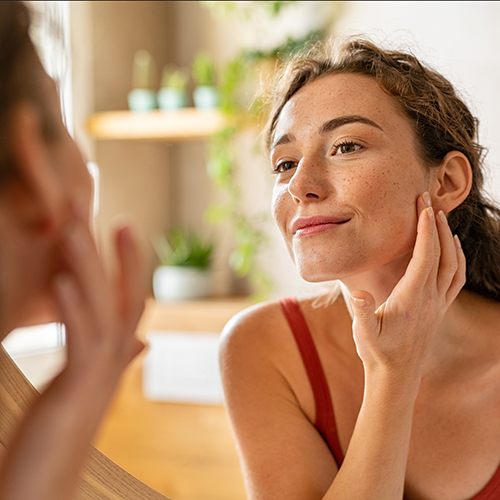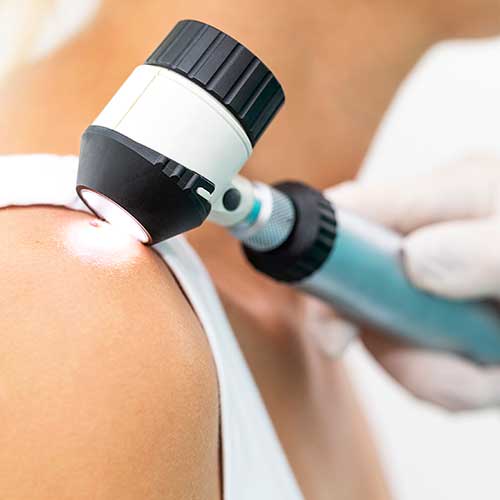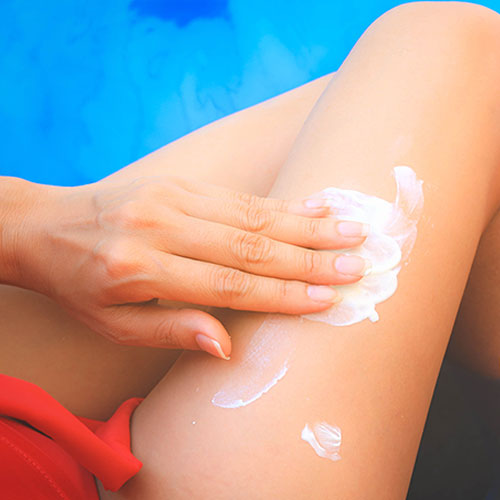July 2023
Skin cancer is the most common type of cancer in the U.S. According to the American Academy of Dermatology Association (AADA), more than three million Americans are diagnosed with nonmelanoma skin cancers each year. The National Cancer Institute reports that almost 100,000 people in the U.S. are diagnosed with melanoma, a more aggressive and potentially deadly form of skin cancer.
Learn more about the role a professional skin cancer check can play in early detection — and treatment — for all types of skin cancer.
What is a professional skin cancer check?
A professional skin cancer check is a special type of exam performed by a dermatologist or a physician assistant (PA) or nurse practitioner (APRN) who specializes in dermatology. During a skin cancer check, the provider will carefully examine the skin on your entire body for signs of suspicious growth.
If they do see anything suspicious, they can biopsy it on the spot and refer you for prompt treatment if any biopsies come back positive.
Can I check myself for skin cancer?
It is definitely possible to check yourself for skin cancer. The American Academy of Dermatology Association offers these tips for performing a skin cancer self-exam. You should especially look out for early signs of melanoma, such as the following:
- Asymmetry
- Irregular edges
- Color variations
- New growth
- Changes in size, appearance, or sensation of existing growth
Why do I need a regular skin cancer check?
While you can—and should—check yourself for skin cancer, you should still see a professional skin cancer check regularly. The biggest reason is that you might miss something. Also, you are less likely to spot skin cancers in the very early stages when they are most easily treatable.
Earlier treatment is best for all types of cancer. This is especially true with melanoma, the most aggressive type of skin cancer. When melanoma is caught before it metastasizes (spreads throughout your body), the five-year survival rate is more than 99%. Once it spreads regionally, the five-year survival rate falls to 71%. Once it spreads to distant parts of the body, the five-year survival rate falls to just 32%.
Also, if you catch a cancerous growth when it is smaller, it is easier to remove, leaves a smaller scar, and has a lesser impact on surrounding tissue.
Finally, if you find anything suspicious in a home check, you will need to see a professional for a biopsy. Going for a regular skin cancer check ensures that you will have an ongoing relationship with a dermatology professional that you can call if you see anything worrisome between visits.
How frequently do I need a professional skin cancer check?
This question is best addressed with your dermatologist when you get your first full-body skin cancer check. They are typically done every one to two years, but those who are at high risk and have a history of skin cancer may need to go more frequently.
Who needs regular skin cancer checks?
Everyone can benefit from a regular skin cancer check, but they are especially important for people who are at a higher risk of developing skin cancer.
Here are some of the risk factors for developing melanoma:
- Exposure to UV light. This could be from a history of sunburns (especially in childhood) and tanning beds.
- Presence of many moles. People who have a lot of moles are likelier to develop skin cancer than those who do not.
- Lighter skin. In fact, the AADA reports that non-Hispanic White people are almost 30 times likelier to develop skin cancer than non-Hispanic people who are Black or Asian.
- Lighter hair or eyes and/or freckles. Not all fair-skinned people are at equal risk of melanoma. Those with blond or red hair, blue or green eyes, or freckles are at increased risk.
- Family history of melanoma. You are at increased risk if any of your first-degree biological relatives (parents, siblings, or children) have had melanoma.
- Personal history of melanoma. If you have previously had melanoma at least once, you are about eight times more likely to develop it again (compared to people who have never had it).
How can I help prevent skin cancer?
The best way to prevent skin cancer is by being smart about your exposure to the sun. These sun-safety tips are a good place to start:
- Wear sunscreen whenever you will be out in the sun. Even 15 minutes of sun can damage your skin.
- Choose a sunscreen with an SPF of 30 or higher. Sunscreens with a lower SPF will not offer you enough protection.
- Choose a sunscreen that blocks both UVA and UVB rays. While UVB rays are typically responsible for sunburns, UVA rays increase the risk of skin cancer. That is why you want protection from both.
- Reapply sunscreen regularly. Swimming and excessive sweating can cause sunscreen protection to wear off even faster. Reapply sunscreen every 60 to 90 minutes if you are strenuously exercising or getting wet.
- Wear a wide-brimmed hat. This will protect your scalp and provide additional protection (in the form of shade) to your face.
- When possible, avoid the sun between 10 a.m. and 4 p.m. This is when the UV rays are at their strongest. If you must be outside, seek the shade, if you can.



